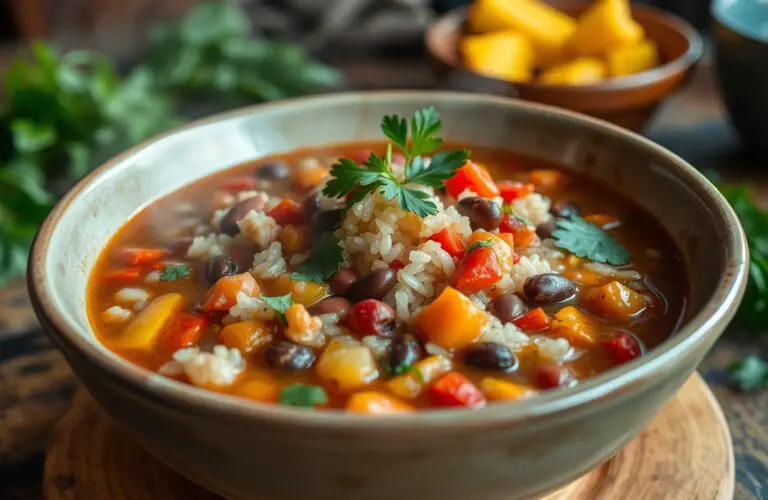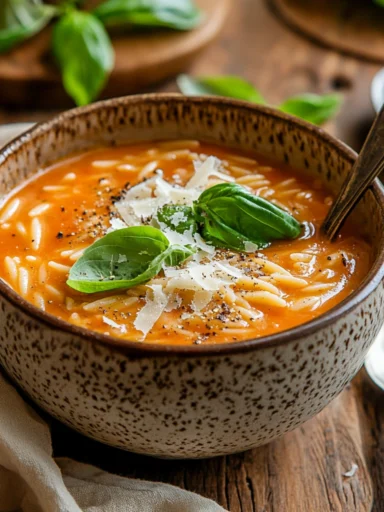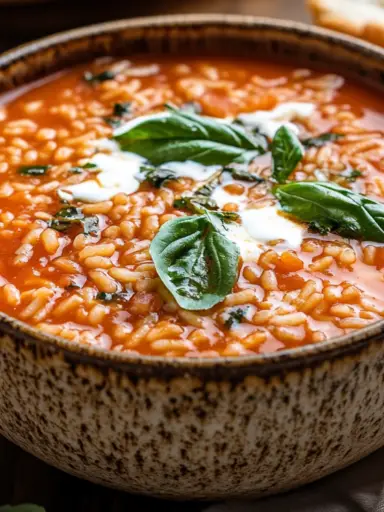As the weather gets cooler, a warm bowl of bean and rice soup is perfect. It’s comforting, delicious, and easy to make. You can also make it your own, whether you like vegetarian or hearty versions.
We’ll take you on a journey through the history and health benefits of bean and rice soup. You’ll learn how to make a great vegetarian bean soup and find variations for different diets. So, grab a spoon and let’s start!
Key Takeaways
- Bean and rice soup is a nutritious and comforting meal option
- Vegetarian bean soup is a great alternative for those looking for a meat-free option
- Bean and rice soup can be customized to suit any taste or dietary need
- This soup is rich in history and has numerous health benefits
- We’ll provide tips and tricks for making the perfect bean and rice soup
- Variations of the soup will be explored, including vegetarian options
The History and Origins of Bean and Rice Soup
Bean and rice soup has a long history across many cultures. Each culture has its own special way of making this easy bean rice soup recipe. It has been a key dish in many diets, offering both nutrition and satisfaction.
Besides that, this soup is loved worldwide for its comforting taste. In Latin America, it’s often enjoyed with bread or salad. It’s also a favorite in health-focused homes because it’s low in calories but packed with nutrients.
Cultural Significance in Different Cuisines
Bean and rice soup has been shaped by different cultures. Also, in Africa, it’s flavored with unique spices and herbs. In Asia, it’s served with noodles or dumplings.
Evolution of the Recipe Through Generations
In addition, the recipe for bean and rice soup has changed over time. Some recipes use canned beans, while others prefer dried beans. The type of rice used also varies, from white to brown or wild rice.
| Ingredient | Quantity |
|---|---|
| Beans | 1 cup |
| Rice | 2 cups |
| Vegetables | 1 cup |
Traditional Preparation Methods
Traditionally, bean and rice soup is cooked in a big pot over low heat. In addition it’s simmered for hours to blend the flavors. Some recipes suggest using a pressure cooker to cook it faster.
Essential Ingredients for the Perfect Bean and Rice Soup
To make a delicious homemade bean soup with rice, you need top-quality ingredients. Additionally, the best beans and rice are key. They should match in texture and taste.
Here’s what to look for:
- Beans: Choose fresh, dried beans without debris and good texture.
- Rice: Pick white or brown rice that keeps its shape well.
- Aromatics: Onions, garlic, and celery add depth to your soup.
- Spices: Use herbs and spices like cumin, oregano, and thyme for flavor.
A well-made homemade bean soup with rice is comforting. With the right ingredients and a simple recipe, you’ll have a tasty soup for any time.
Here’s a simple table to help you plan your ingredients:
| Ingredient | Quantity |
|---|---|
| Beans | 1 cup dried |
| Rice | 2 cups cooked |
| Onions | 1 medium |
| Garlic | 3 cloves |
Choosing the Right Beans for Your Soup
Choosing the right beans is key to a tasty simple bean rice soup. Furthermore, with many options, picking the right one can be tough. Also, we’ll look at dried vs canned beans, popular types, and how to prepare them.
A classic bean and rice soup often starts with dried or canned beans. Dried beans give a richer taste, but canned ones are quicker. Kidney, black, and pinto beans are favorites for their unique tastes and textures.
- Sort and rinse your dried beans to remove any debris or stones
- Soak your beans in water for at least 8 hours to rehydrate them
- Use a large pot to cook your beans, as they will expand during cooking
By following these tips and picking the right beans, you’ll make a delicious simple bean rice soup. It’s sure to become a favorite.
| Bean Variety | Cooking Time | Flavor Profile |
|---|---|---|
| Kidney Beans | 45-60 minutes | Mild, slightly sweet |
| Black Beans | 30-45 minutes | Earthy, slightly smoky |
| Pinto Beans | 45-60 minutes | Mild, slightly nutty |
The Best Rice Options for Your Soup
Choosing the right rice for your soup is key. Furthermore, there are many types, making it hard to pick the best one. Let’s explore some popular rice options and what makes them special.
White rice, brown rice, and jasmine rice are top picks. Also, white rice offers a neutral taste and soft texture. Furthermore, brown rice brings a nuttier flavor and chewier bite. Additionally, Jasmine rice is known for its fragrant and fluffy texture.
- White rice: neutral flavor, soft texture
- Brown rice: nuttier flavor, chewier texture
- Jasmine rice: fragrant, fluffy texture
Consider arborio rice or basmati rice too. Arborio rice is creamy, while basmati rice has a nutty taste.
The best rice for your soup depends on your taste and what you’re aiming for. Additionally, the right rice can turn a simple soup into a hit. Whether you like classic or adventurous flavors, the right rice makes all the difference.
| Rice Type | Flavor | Texture |
|---|---|---|
| White Rice | Neutral | Soft |
| Brown Rice | Nutty | Chewy |
| Jasmine Rice | Fragrant | Fluffy |
Step-by-Step Classic Bean and Rice Soup Recipe
To make a tasty vegetarian bean soup, follow a simple recipe. This easy bean rice soup recipe is great for any day. Also, gather all the ingredients, like beans, rice, veggies, and spices.
With all ingredients ready, start cooking. This recipe takes about 30 minutes to prepare. It serves 4-6 people, so adjust as needed.
Preparation Time and Serving Size
Cooking time is around 40-45 minutes. Besides that, serve hot, topped with fresh herbs and crusty bread.
Cooking Instructions
To cook the soup, follow these steps:
- Heat oil in a large pot over medium heat.
- Add the onions, garlic, and spices, and cook until the onions are translucent.
- Then, add the beans, rice, and vegetables, and cook for 10-15 minutes.
- After that, season the soup with salt and pepper to taste.
Storage and Reheating Guidelines
Finally, store the soup in an airtight container in the fridge for up to 3 days. To reheat, microwave or heat over low heat, stirring often.
Nutritional Benefits of Homemade Bean and Rice Soup
A warm, comforting bowl of healthy bean and rice soup is not only delicious. It’s also packed with nutrients. This homemade bean soup with rice is a great source of protein, fiber, and vitamins and minerals.
Some of the key nutritional benefits of this soup include:
- High protein content to help build and repair muscles
- Moreover, rich in fiber to support healthy digestion and bowel function
- Good source of vitamins and minerals, such as iron, zinc, and potassium
Furthermore, by adding healthy soup to your diet, you get these benefits and more. It’s perfect for a comforting meal or a healthy snack.
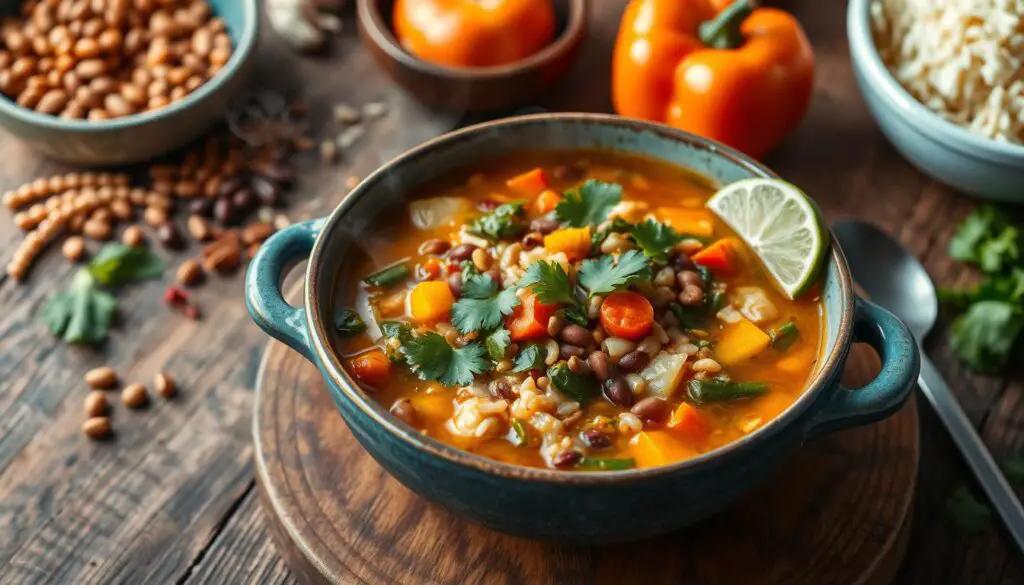
To get the most nutritional benefits, use fresh and wholesome ingredients for your homemade bean soup with rice. Moreover, its rich flavor and health benefits make it a favorite at home.
| Nutrient | Amount per serving |
|---|---|
| Protein | 15g |
| Fiber | 10g |
| Vitamin A | 20% of the Daily Value (DV) |
Tips for Enhancing Your Soup’s Flavor
To make the best soup, balance flavors and choose top-notch ingredients. A simple bean rice soup can get a boost from herbs and spices. Try mixing fresh cilantro, dried oregano, and a bit of cumin for a special taste.
Remember, a little seasoning is enough. Begin with sautéed onions and garlic. Then, add your beans, rice, and broth. As it cooks, tweak the seasoning to your liking. Lime juice, smoked paprika, or hot sauce can add a nice touch.
For an amazing simple bean rice soup, try new herb and spice mixes. Here are some favorites:
- Italian seasoning: basil, thyme, and rosemary
- Mexican-inspired: cumin, chili powder, and cilantro
- Indian-style: curry powder, turmeric, and cumin
By experimenting with these tips and your favorite ingredients, you’ll make a delicious and flavorful soup. It will quickly become a favorite in your home.

For a quick and tasty meal, check out this 10-Minute Rice Soup recipe from 12 Tomatoes!
Common Mistakes to Avoid When Making Bean and Rice Soup
When making this soup, details matter a lot. Avoiding common mistakes is key to a great taste and texture. A classic bean and rice soup needs careful planning and execution for the best results.
Don’t overcook the beans, as they can become mushy. Also, picking the wrong rice can mess up the soup’s texture. To avoid these issues, stick to a reliable recipe and use top-notch ingredients.
Troubleshooting Tips
- Use beans like kidney or black beans that keep their shape well.
- Moreover, choose rice that goes well with the beans, like white or brown rice.
- Additionally, don’t overdo it with the seasoning, as it can make the soup too salty or bitter.
Expert Solutions
To make a delicious soup, add onions and garlic for extra flavor. Also, ary different spices and herbs to find your favorite mix. By following these tips and avoiding common mistakes, you’ll make a soup that everyone will love.
| Mistake | Solution |
|---|---|
| Overcooking the beans | Monitor the cooking time and adjust as needed |
| Using the wrong type of rice | Choose a type of rice that complements the flavor of the beans |
| Overseasoning the soup | Taste and adjust the seasoning as needed |
Vegetarian and Vegan Variations
If you want to make the traditional bean and rice soup fit your diet, you have many options. Also, you can make a tasty vegetarian bean soup by swapping out chicken or beef broth for vegetable broth. This change keeps the soup full of flavor.
Additionally, choosing the right spices and herbs is crucial for a great soup. Here are some favorites:
- Cumin
- Paprika
- Garlic powder
- Onion powder
These spices bring warmth and depth to your vegetarian bean soup. They enhance the flavors without taking over.
Also, for vegan versions, swap out cheese or sour cream for vegan alternatives and try using non-dairy yogurt or vegan cheese to add creaminess. This way, you can make a delicious vegan soup that everyone will love.
Moreover, try different ingredients and spices to make a unique vegetarian bean soup. It’s perfect for vegetarians, vegans, or anyone looking for a healthy, tasty meal.
Seasonal Adaptations for Your Soup
As the seasons change, so can your soup’s flavors and ingredients. Moreover, a few simple changes can make your easy bean rice soup perfect for any season. In summer, add diced tomatoes, corn, and bell peppers for flavor and color.
Additionally, in winter, add diced potatoes, carrots, and celery for warmth. Try different spices and herbs for unique tastes. Cumin and chili powder add smoky heat, while thyme and rosemary add savory depth.
Summer Fresh Ingredients
- Diced tomatoes for a burst of juicy flavor
- Corn for a sweet and creamy texture
- Bell peppers for a crunchy and colorful addition
Winter Comfort Additions
- Diced potatoes for a hearty and filling base
- Carrots and celery for a classic and comforting flavor
- Spices like cumin and chili powder for a smoky heat
By using seasonal ingredients, your soup becomes delicious, nutritious, and satisfying. Don’t be afraid to try new ingredients and flavors. Your taste buds will love it!
Serving Suggestions and Pairings
When serving homemade bean soup with rice, how you present it matters. Additionally, a warm bowl of soup looks great with the right sides and bread. Also, try adding crusty bread or a green salad to make the meal complete.
Besides that, serving the soup with warm, crusty bread is a great choice. It’s perfect for dipping into the broth. Here are some bread options:
- Crusty baguette
- Garlic bread
- Grilled ciabatta
Complementary Side Dishes
Moreover, there are many sides that go well with bean soup and rice. Here are a few ideas:
- Roasted vegetables
- Grilled cheese sandwiches
- Fresh fruit salad
Bread and Cracker Options
For a lighter choice, try crackers or croutons with your soup. Also, they add a nice crunch without making you too full. Here are some cracker options:
- Saltines
- Wheat thins
- Club crackers
Pairing your homemade bean soup with rice with the right sides and bread makes a great meal. Furthermore, it’s perfect for any occasion, from a weeknight dinner to a special event. The best bean and rice soup is always a hit.
Make-Ahead and Freezing Instructions
Preparing a simple bean rice soup in advance is a smart move. It’s great for busy days because you can reheat it easily. Just cook the classic soup as you normally would, then cool it before storing.
Some benefits of making ahead include:
- Time-saving: Prepare the soup on the weekend and reheat it throughout the week.
- Convenience: Have a healthy, homemade meal ready to go, even on the busiest days.
- Cost-effective: Buy ingredients in bulk and prepare large batches of soup to freeze for later.
Moreover, to freeze, portion the cooled soup into airtight containers or freezer bags. Make sure to label and date them. When you’re ready to eat, thaw overnight in the fridge or reheat from frozen in the microwave or on the stovetop.
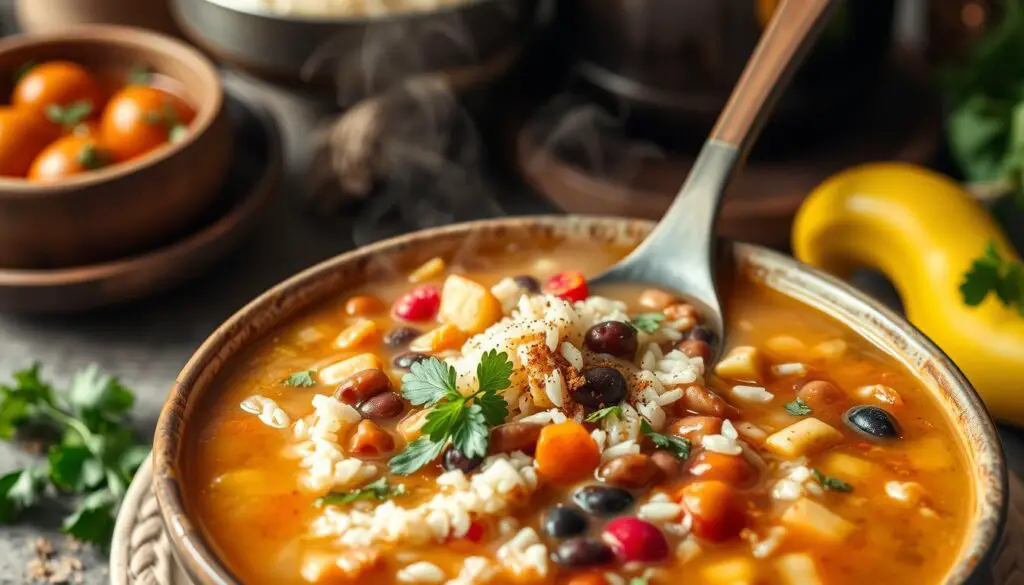
By following these tips, you can enjoy a tasty and healthy classic bean and rice soup anytime. You won’t have to worry about cooking every day.
| Storage Method | Shelf Life |
|---|---|
| Refrigerate | 3-5 days |
| Freeze | 3-6 months |
Health-Conscious Modifications
Want to make your bean and rice soup healthier? There are several ways to do it. Start by using low-sodium broth and less salt. This is great for those with high blood pressure or heart issues.
For a gluten-free version, swap out gluten-containing ingredients. Use gluten-free broth and replace wheat thickeners with cornstarch or tapioca flour. This way, people with gluten intolerance can enjoy the soup too.
- Choose lean proteins like chicken or turkey to cut down on fat.
- Moreover, add lots of veggies like carrots, celery, and onions for more fiber and nutrients.
- Also, reduce added sugars and refined carbs to lower calorie intake.
By making these changes, you can make a tasty and nutritious meal. Whether you need a low-sodium or gluten-free option, there are many ways to make this soup better for you.
| Modification | Description |
|---|---|
| Low-Sodium | Use low-sodium broth and limit added salt |
| Gluten-Free | Substitute gluten-containing ingredients with gluten-free alternatives |
| Lean Protein | Use lean protein sources, such as chicken or turkey |
Conclusion
As we wrap up our journey into vegetarian bean soup and easy bean rice soup, we gain a new respect for this simple yet nourishing dish. Also, it has a rich cultural background and is incredibly versatile. Bean and rice soup is truly a culinary gem.
Additionally, this soup can be enjoyed in many ways, from traditional to creative. Moreover, its charm lies in making us feel good inside and out. In addition, as you try new flavors and ingredients, remember the joy of sharing and the bonds it creates.
Also, for a comforting and hearty dish, try this Old-Fashioned Beef Stew recipe!
So, next time you want to warm up and nourish your soul, try this classic recipe. Besides that, let it take you to a cozy kitchen filled with the scent of beans and spices. Enjoy every bite and celebrate the beauty of homemade cooking.

 RetSoup
RetSoup